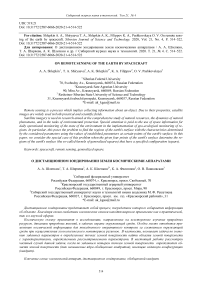On remote sensing of the Earth by spacecraft
Автор: A. А. Shlepkin, Т. A. Shiryaeva, A. K. Shlepkin, K. A. Filippov, O. V. Pashkovskaya
Журнал: Siberian Aerospace Journal @vestnik-sibsau-en
Рубрика: Informatics, computer technology and management
Статья в выпуске: 4 vol.21, 2020 года.
Бесплатный доступ
Remote sensing is a process which implies collecting information about an object. Due to their properties, satellite images are widely used in both practical and scientific fields. Satellite imagery is used in research aimed at the comprehensive study of natural resources, the dynamics of natural phenomena, and in the tasks of environmental protection. Special attention is paid to the use of space information for daily operational monitoring of the state of the environment in the implementation of geo-ecological monitoring of regions. In particular, this poses the problem to find the regions of the earth's surface with the characteristics determined by the considered parameters using the values of established parameters at certain points of the earth's surface. In this paper, we consider the special case of this problem when the given four points of the earth's surface determine the regions of the earth's surface (the so-called kernels of generalized squares) that have a specified configuration (square).
Spacecraft, remote sensing, generalized square.
Короткий адрес: https://sciup.org/148321775
IDR: 148321775 | УДК: 519.21 | DOI: 10.31772/2587-6066-2020-21-4-514-522
Текст научной статьи On remote sensing of the Earth by spacecraft
Introduction. Remote sensing of a territory is a process which implies collecting information about a territory without direct contact with it [1–6]. In connection with the widespread reduction of the programmes for aerial photography of the earth's surface, satellite imagery of the earth's surface is acquiring special interest. Due to their properties, space images are widely used in both practical and scientific fields [7; 9–11]. Materials of Earth research from space are widely used in Earth sciences. Space imagery is used in research aimed at the comprehensive study of natural resources, the dynamics of natural phenomena, in the tasks of environmental protection. Diverse and widespread use of remote sensing data is especially found in cartography, they serve as sources for the compilation and operational updating of general geographic and thematic maps [8]. Special attention is paid to the use of space information for current operational control over the state of the environment during geoecological monitoring of regions. The main advantages of using remote sensing data for mapping are the following: relevance of data at the time of research, high accuracy in determining the boundaries of objects [12–15]. In particular, this poses the problem in the value of the given parameters at certain points of the earth's surface to find areas of the earth's surface with characteristics determined by the parameters under consideration. In this paper, we consider the special case of this problem when the given four points of the earth's surface determine the regions of the earth's surface (the so-called kernels of generalized squares) that have a specified configuration (square).
Statement of problems, definitions, designations. Mathematical model of the problem. Let a Cartesian coordinate system be given on the plane and A = A ( x A ; у A ) , B = B ( xB ; yB ) , C = C ( X c ; yc ) , D = D ( X d ; y D ) are four different points on the plane, LA , LB , LC , LD are straight lines passing through the points A , B , C , D respectively. Let us denote by VAC the point of intersection of the straight lines LA and LС , VAD – the point of intersection
V of the straight lines LA and LD , BC – the point of intersection of the straight lines LB and LС , VBD – the point of intersection of the straight lines LB and LD , VAD; VBD – the distance between the points VAD and VBD , VBC; VBD – the distance between the points VBC and VBD .
The generalized square is a set of lines K A BCD = { L A , L B , LC , LD } with the property that L A is parallel to LB , LС is parallel LD , LA is perpendicular to Lc , and ( F AD ; VBD | = | V B C ; VBD |. The generalized square kernel is a square with the set of vertices { V AD , V BD , V BC , V AC } (fig. 1).
Question 1. Does the generalized square K A BCD = { L A , L B , L C , L D } always exist at the random selection of the points A = A ( x A ; y A ) , B = B ( xB ; yB ) , c = c ( x c ; y c ) , d = d ( x d ; y D ) ?
Question 2. If question 1 is answered negatively, what are the necessary and sufficient conditions for its positive solution?
Question 3. If for the set of the points A = A ( x A ; y A ) , B = B ( X b ; y B ) , C = C ( x c ; y c ) , D = D ( X d ; y D ) the generalized square K A BCD = { L A , LB , Lc , L D } exists, how many such generalized squares are there?
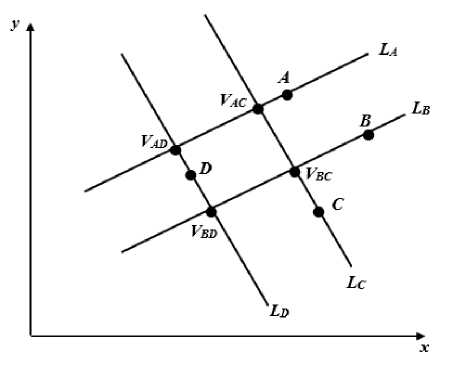
Fig. 1. Generalized square
Рис. 1. Обобщенный квадрат
Partial solution to question 2 and full solution to question 3. In accordance with the above notations, A = A ( xA ; y A ) , B = B ( xb ; у в ) , c = c ( xc ; y c ) , D = D ( xD ; yD ) are four different points on the plane, LA , LB , LC , LD – straight lines that pass through the points A , B , C , D respectively. Let us write the equations of these sides according to [16]:
- L A : y = kx + b A - equation of the straight line passing through the point A = A ( xA ; y A ) ,
- LB : y = kx + bB - equation of the straight line passing through the point B = B ( xB ; yB ) ,
- Lc : y = -—x + bc - equation of the straight k passing through the point C = C (xc; yc),
- Ld : y = -—x + bD - equation of the straight k passing through the point D = D (xD; yD).
According to the notation introduced above, write down the set of equations for finding line
line
we the
points VAC , VBC , V BD , VBC and distances VAD ; VBD ,
VBC ; VBD .
V AC :
y=kx+bA ,
- 1
y= x+bC, k where bA =yA
- kxA ,bc = y c+-xc . k
V AC :
V AC =
V BC :
У = kx + ( У а - kxA ) ,
У = -7 x + l У с +7 x c I , k I k )
( k2 ( yC - yD ) + k ( xC - xD )) +
x =
У =
k 2 xA + k ( Ус - Уа ) + xc
1 + k k2yc +k(xc -
,
1 + k 2
;
y = kx + bB, y = -- x + bc, k
x =
k 2 xB + k ( yc - yB ) + xc
V BC =
1 + k2
,
У =
( x c
1 + k 2
;
V AD :
’ У = kx + b A ,
1 , y = - x + bD , I k
x =
k 2 x A + k ( y D - У a ) + x D ,
V AD =
V BD :
У =
1 + k k 2 y D + к ( xD-
+ (k(Ус - yD) + (xc - xD ))2 2.
Squaring both sides of the above equation, we obtain: k 4 ( xA - xB ) + 2 k 3 ( xA - xB )( yB - yA ) + k 2 ( yB - yA ) + + k 2 ( xB - x A ) + 2 k ( x B - x A )( yA - yB ) + ( yA - yB ) =
= k4 (yC - yD ) + 2k3 (yC - yD )(xC - xD ) ++ k 2 (xC - xD ) + k 2 ( yC - yD ) +
+ 2k(Ус -yD)(xc -xD) + (xc -xD)2-
After reducing the similar terms with respect to k, we obtain the biquadratic equation:
k 4 [ ( xA - xB ) 2 - ( У с - y D ) 2 ] +
k3 [2(xA - xB )(yB - yA) - 2(yC - yD )(xC - xD ))] + k 2 [( yB - yA ) +( xB - xA ) -( xC - xD ) -( yC - yD ) ] + k[2(xB -xA)(Уа - Ув )- 2(Ус -yD)(xc -xD)] +
1 + k 2
xA ) + Уа .
;
[( У а - У в ) 2 -( xc - xD ) 2 ] = 0-
Dividing both sides of this equation by the coefficient at k 4, we obtain the following equation:
y = kx + bB, y = -- x + bD , k
k 4 + k 3
2 ( xA - xB ) ( У в - У а ) - 2 ( У с - y D )( xc - xD ) ) ( x A - x B ) 2 -( У с - y D ) 2
V BD =
x =
k 2 xB + k ( y D - У в ) + x D
y =
1 + k k 2 y D + k ( XD"
1 + k 2
k 2
I V AD ;V BD | = ( k 2 (
xB ) + Ув . ;
xA - xB) + k(Ув - Уа ))2 +
+ (k (xB - xA) + (Уа - Ув ))2
∙
1 + k 2
I VBC ; ^ BD | =
(k2 (Ус - yD) + k (xc - xD)) +
+ (k (yc - yD) + (xc - xD ))2
1 + k 2.
Since the sides of the square are equal, we search for k from the condition | VAD ; VBD |=| VBC ; VBD |:
( k 2 ( xA - xB ) + k ( yB - yA )) +
+ (k (xB - xA) + (Уа - Ув ))2 2 =
( yB - yA ) +( xB - xA ) -( xC - xD ) -( yC - yD )
( x A - x B ) 2 -( У с - y D ) 2 .
+
k
2(xB - xA)(Уа - Ув )- 2(Ус - yD)(xc - xD)
( x A - x B ) 2 -( У с - y D ) 2 .
(Уа - Ув )2 -(xc - xD )2
( x A - x B ) 2 -( У с - y D ) 2
= 0.
This yields the partial solution to question 2 and the full solution to question 3.
Partial solution to question 2 (sufficient condition for the existence of a generalized square). To make the equation have a real root, it is sufficient to satisfy the inequality:
( Уа - Ув )2 -(xc - xD )2(xA - xB )2 -( Ус - yD )2
< 0.
Solution to question 3. According to [17], this equation has no more than 4 different real roots. Since with the considered situation we can consider a certain case L A is parallel to LC and a certain case LA is parallel to LD, then the total number of generalized squares for a fixed set of points A = A ( x a ; У а ) , B = B ( x b ; У в ) , C = C ( x c ; У с ) , D = D ( xD ; yD ) is no more than 12. It is obvious that the estimate is accurate.
Case Study. As our example we take the following: A ( x A ; у а ) = ( 5;6 ) , B ( x B ; У в ) = ( 7;5 ) , C ( x c ; У c ) = ( 4;3 ) , D ( xD ; УD ) = ( 3;4 ) and we consider three different situations.
1. LA is parallel to LB
After substituting the coordinates of the given points into the formula (8), we obtain the equation
3 k 4 + 6 k 3 + 3 k 2 + 6 k = 0.
VBC
We find the roots of this equation: k 1 = 0, k 2 = - 2, k 3 = i , k 4 = - i , wherei 2 = - 1.
We calculate the coordinates of the vertices of the generalized square for the root k = k 1 = 0 using the formulae:
k 2 xA + k ( yc
^^^^^^B
V Ac =
У =
1 + k k 2 yc + k ( xc -
Уа ) + xc
,
V AD
^^^^^^B
1 + k 2
XA) + Уа
,
V AC ( XC ; y A ) = V AC ( 4;6 ) ,
k2xb +k(yc x =-----—
^^^^^^B
V Bc =
У =
1 + k k 2 yc + k ( xc -
Ув) + xc
,
^^^^^^B
1 + k 2
xв) + Ув
,
Vвc ( xc ; ув ) = vbc ( 4;5 ) , x = k 2 XA + k ( У D
^^^^^^B
V AD =
У =
1 + k k 2 y D + k ( XD
Уа ) + xd
,
V BD
^^^^^^B
1 + k 2
xa ) + Уа
,
V AD ( XD ; y A ) = V AD ( 3;6 ) ,
x
y
x
y
x
y
|
k 2 xв + k ( yc - Ув ) + xc |
|
|
1 + k 2 |
|
|
( - 2 ) 2 7 + ( - 2 )( 3 - 5 ) + 4 |
36 |
|
1 + ( - 2 ) 2 |
5, |
|
k 2 yc + k ( xc - xв ) + Ув |
|
|
1 + k2 |
|
|
( - 2 ) 2 3 + ( - 2 )( 4 - 7 ) + 5 _ |
23 |
|
1 + ( - 2 ) 2 |
5, |
|
k 2 XA + k ( У D - У A ) + XD |
|
|
1 + k 2 |
|
|
( - 2 ) 2 5 + ( - 2 )( 4 - 6 ) + 3 |
27 |
|
1 + ( - 2 ) 2 |
5 |
|
k 2 У D + k ( XD - XA ) + У A |
|
|
1 + k 2 |
|
|
( - 2 ) 2 4 + ( - 2 )( 3 - 5 ) + 6 |
26 |
|
1 + ( - 2 ) 2 |
5 |
|
= k 2 xв + k ( У D - У в ) + XD |
|
|
1 + k 2 |
|
|
( - 2 ) 2 7 + ( - 2 )( 4 - 5 ) + 3 = |
33 |
|
1 + (- 2 ) 2 |
5 |
|
, = k 2 У D + k ( XD - XB ) + У в |
|
|
1 + k 2 |
|
|
( - 2 ) 24 + ( - 2 )( 3 - 7 ) + 5 _ |
29 |
|
1 + ( - 2 ) 2 |
5 |
V вD ( 6.6;5.8 ) .
,
,
,
,
,
,
V ad ( 5.4;5.2 ) ;
V вc ( 7.2; 4.6 ) ;
V BD =
x = k 2 XB + k ( y D
^^^^^^B
У =
1 + k k2yD +k(XD
Ув ) + XD
,
^^^^^^B
1 + k 2
xв) + Ув
,
V BD ( xd ; yB ) = V BD ( 3;5 ) .
Direct calculation shows that
I V ; ] =1 V ; V 1 = V AC BC BC BD B
BD ;
; VAD |=| VAD ; VAc | = 1 •
It follows that the quadrangle with the vertices VAD , VBD , VBC , VAC is a square (fig. 2).
We calculate the coordinates of the vertices of the generalized square for the root k = k 2= –2 using the formulae:
x = k 2 XA + k (Уc - Уа ) + xc = x 1+k2
_ ( - 2 ) 2 5 + ( - 2 )( 3 - 6 ) + 4 _30
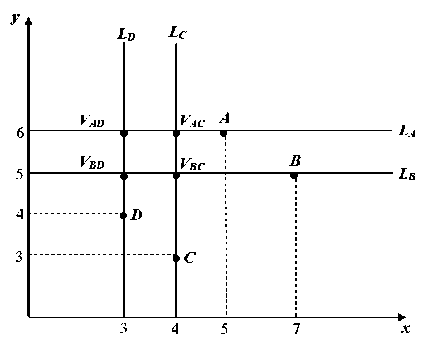
Fig. 2. Generalized square for the root k 1 = 0
V AC
1 + ( - 2 ) 2
У =
k 2 yc + k ( xc
^^^^^^B
XA ) + Уа =
V ac ( 6;4 ) ;
Рис. 2. Обобщенный квадрат для корня k 1 = 0
1 + k 2
_ ( - 2 ) 2 3 + ( - 2 )( 4 - 5 ) + 6 _20
1 + ( - 2 ) 2
Direct calculation shows that
0 | VAD ; ^BD |=| VBD ; V Sc ] = | VBC ; V Ac |=| V Ac ; V AD | = 5Ц ■
It follows that the quadrangle with the vertices VAD , VBD , VBC , VAC is a square (fig. 3).
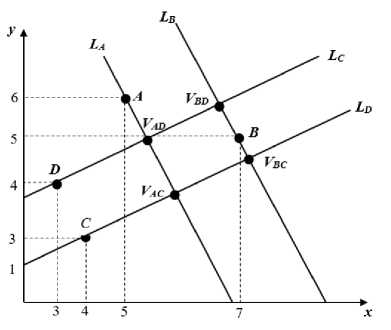
Fig. 3. Generalized square for the root k 2 = –2
V AD :
y = kx + b A ,
1 y = -- x + bD, k x = k 2 xA + k ( yD
V AD =
V CD :
^^^^^^B
Рис. 3. Обобщенный квадрат для корня k 2 = –2
2. The straight line L A is parallel to the straight line L C
The general equations of required sides in this case are the following:
L A : y = kx + b A - equation of the straight line passing through the point A ( x A ; y A ) ;
LB : y = -1 x + bB - equation of the straight line pass-k ing through the point B (xB; yB);
L C : y = kx + b C - equation of the straight line passing through the point C ( x C ; y C ) ;
Ld : y = -1 x + bD - equation of the straight line pass-k ing through the point D (xD; yD).
Let us write down the set of equations for finding the vertices of the square in this case:
f y = kx + b A ,
V AB : i - I
I y = —x + bB , I k
where bA =y A - kx A ,b B = У в + 1 x B ; k
У = kx + ( У A - kx A ) ,
У = -T x + У в + Tx B k I k
x =
k 2 xA + k ( Ув - yA) + xB
У =
1 + k k 2 yD +k(xD
yA ) + xD
,
^^^^^^B
1 + k 2
y = kx + bc, y = -- x + bD , k
k 2 x C + k ( yD x =------—
^^^^^^B
V CD =
У =
1 + k k2yD +k(xD-
V AB =
y =
1 + k 2
k 2 У в + k ( xB - xA ) + У A
1 + k 2
V BC :
y = kx + b C ,
У = -- x + bB, k
V BC =
x =
У =
k 2 x C + k ( yB - y C ) + xB 1 + k 2
k 2 yB + k ( xB - x C ) + y C 1 + k 2
xA) + yA
.
yC) + xD
,
^^^^^^B
1 + k 2
.
xC ) + yD
.
After substituting the coordinates of the points into the formula, we obtain the equation
2 k 3 + k 2 + 2 k + 1 = 0.
We find the roots of this equation 1
k 1 =- 2, k 2 =- i ,k 3 = i , where i =- 1. We calculate the coordinates of the vertices of the generalized square for a real root k = k 1 = - 2 according to the formulae pre-
sented above.
x = k 2 xA + k ( У в
- yA) + xB
1 + k 2
V AB
V BC
1Y ^^^^^^B
2 J
У =
5 - 2 ( 5 - 6 ) + 7
1 ( 1 ) 2
1 + -
I 2 J
k 2 У в + k ( xB
^^^^^^B
1 + k 2
1 ( 1 1 2
1 + -
I 2 J
k 2 x C + k ( yB x =------—
1Y ^^^^^^B I
2 J
У =
= 7,
xA) + yA =
V AB ( 7;5 ) .
= 5,
- yC) + xB
1 + k2
4 - 2 ( 5 - 3 ) + 7
1 ( 1 )2
1 + -
I 2 J
k 2 У в + k ( x b
^^^^^^B
1 + k 2
1 ( 1 1 2
1 + -
I 2 J
5,
xC ) + y C _
V bc ( 5.6;2.2 ) .
5,
vad _ *
V CD
x _ k 2 xA + k ( y D
- yA ) + xD
11 2 ^^^^^^B
2 J
У _
1 + k2
5 - 2 ( 4 - 6 ) + 3
1 ( 1 1 2
1 + -
I 2 J
k 2 y D + k ( x D
^^^^^^B
2 J
^^^^^^в
5,
x A ) + У а _
1 + k 2
4 - 2 ( 3 - 5 ) + 6
1 ( 1 1 2
1 + -
I 2 J
k 2 xC + k ( yD
^^^^^^B
2 J
У _
V ad ( 4.2;6.4 ) .
5,
- y c ^ + x D
1 + k 2
4 - 2(4 - 3)+3
1 f 1 )2
1 + -
I 2 J
k 2 y D + k ( xd
^^^^^^B
5;
xC ) + y D _
V cd ( 2.8;3.6 ) .
1 1 2 ^^^^^^B
2 J
1 + k 2
4 - 2 ( 3 - 4 ) + 3
1 f 1 1 2
1 + -
I 2 J
5;
Direct calculation shows that
|VAB ; ^BC |_| VB
BC ;
; V DC I _ I V AD ; V DC |_| V A
AD ;
.
Consequently, the quadrangle with
VAB , VDC , VBC , VAD is a square (fig. 4).
the vertices
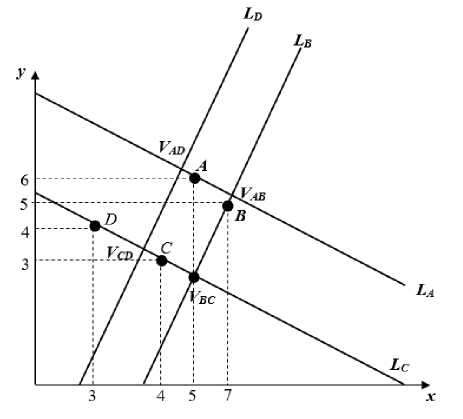
Fig. 4. Generalized square for the root k = –1/2
Рис. 4. Обобщенный квадрат для корня k = –1/2
3. The straight line L A is parallel to the straight line L D
Let us write down the general equations of required sides in case when the straight line L A is parallel to the straight line L D , in this instance:
L A : y _ kx + bA - equation of the straight line passing through the point A ( xA ; yA ) ;
LB : y _-1 x + bB - equation of the straight line pass-k ing through the point B (xB; yB);
Lc : y _ -1 x + bc - equation of the straight line pass-k ing through the point C (xC; yC);
L D : y _ kx + bD - equation of the straight line passing through the point D ( xD ; yD ) .
The system of equations for finding the vertices of a square in this case is written as follows:
) y = kx + bA ,
where bA =yA
V AC
V AC
VDC
V DC
V BD
VBD
V AC : * - 1
I y = T s + bC ,
- kxA,bC =yC+TxC . k y _ kx + ( Уа - kxA ), : * 1 . f .1 1
у _-T x + l y C +t xc I , k I k )
k 2 xA + k ( yC x _------—
У _
^^^^^^B
1 + k k 2 yC + k ( xC -
Уа ) + xC
,
^^^^^^B
1 + k 2
y _ kx + bD, y _--x + bC, k
_ *
_ *
x A ) + У а
.
k 2 xD + k ( yC x _ 1 + k2
y _
k 2 yC + k ( xC
^^^^^^B
yD ) + xC
,
^^^^^^B
xD ) + yD
1 + k 2
.
y _ kx + bD
1, y _--x + bB k
_ k 2 xD + k ( Ув - yD ) + xB x — 9
1 + k 2
_ k2 Ув + k ( xb - xd ) + yD y 1 + k2
.
Let us find the distance between the points.
I V AB ; VDb \ _ ( k 2 (
+ ( k ( xD
^^^^^^B
xA
^^^^^^B
xD) + k (yD - Уа )) +
xA ) + (У A - yD ))2
•------—
1 + k 2.
I Vdc ; V db | = l ( k ( y c yB ) + k ( x c xB ) ) +

Let us define k from the condition
| VAB ; ^ DB 1=| ^ DC ; ^ DB |
VDC = '
(к2 (Xa - Xd ) + k (yD - Уа ))2 +
+ (k(xD - Xa ) + (Уа - Vd ))2 2 =
k 2 xD + k ( yc - yD ) + xc
= 1 + k2
( - 0.28) 2 3+I Z 0.28) ( 3-4)14 = 4 51;
1 + (-0,28)2. ’ k2 yc + k (xc - xD) + yD y =----W
(-0.28)23+j-0.28)^4-3) + 4 = 3 66;
1 + (-0.28)2. ’
VDC ( 4.51;3.66 ) .
(k2 ( Ус - Ув ) + k (xc - Xb )) +
+ (k(Ус - Ув ) + (xc - Xb ))2 2
VAB = "
x =
k 2 Xa + k ( Ув - Уа ) + Xb =
1 + k k -
= ( - 0.28 ) 2 5 + ( - 0.28 )( 5 - 6 ) + 7
Let us square both sides of the resulting equality:
k 4 ( Xa - Xd ) 2 + 2 k 3 ( Xa - Xd )( V d - У а ) +
+ k2 (yD - yA ) + k2 (XD - XA ) + 2k(XD - XA )(yA - yD ) + +(Уа - Vd)2 = k4 (Ус - Ув )2 + 2k3 (Ус - Ув )(xc -Xb ) + + k 2(xc - Xb ) + k 2(yc - yB) +
1 + ( - 0.28 ) 2
= k 2 Ув + k ( Xb - Xa ) + Уа y 1 + kг
= (-0.28)2 5 + (-0.28)( 7 - 5) + 6
V ab ( 7.1;5.4 ) .
= 7.1;
1 + ( - 0.28 ) 2
= 5.4;
+ 2k(yc -yB)(xc -Xb) + (xc -Xb) •
After reducing the terms in regard to the power of k of additive components, we obtain the following equation:
k4 [(Xa - Xd)2-(Ус -Ув)2] +
+ k3 [2(Xa - Xd )(Vd - Уа) - 2(Ус - Ув )(xc - Xb ))] + +k 2 [(yD - yA ) +( XD - XA ) -( xC - XB ) -( yC - yB ) ] + +k[2(Xd - Xa )(Уа - Vd )-2(Ус -Ув )(xc -Xb )] = 0.
We substitute the coordinates of the points into the equation and we obtain the equation with numerical coefficients:
20 k 3 + 12 k 2 + 20 k + 5 = 0.
We find the roots of this equation k 1 =- 0,28, k 2 = 0,16 + 0,94 i , k 3 = 0,16 - 0,94 i .
We calculate the coordinates of the vertices of the
VBD = '
generalized square for a real root k = k 1 = - 0,28 accord-
ing to the formulae presented above:
k 2 Xa + k ( Ус - Уа ) + xc
1 + k2
( - 0.28 )2 5 + ( - 0.28 )( 3 - 6 ) + 4
x =
k 2 Xd + k ( Ув - Vd ) + Xb _
1 + kг
_ ( - 0.28 ) 2 3 + ( - 0.28 )( 5 - 4 ) + 7
1 + ( - 0.28 ) 2
= k 2 y B + k ( Xb - y” 1 + kг
= 6.4;
Xd ) + V d _
_ ( - 0.28 ) 2 5 + ( - 0.28 )( 7 - 3 ) + 4
V bd ( 6.4;3.96 ) .
V ac =^
y =
1 + ( - 0.28 ) k 2 У с + k ( x c
^^^^^B
1 + k2
= 4.85;
Xa )+ У а =
( - 0,28 )2 3 + ( - 0,28 )( 4 - 5 ) + 6
1 + ( - 0,28 )2
= 6,08;
1 + ( - 0.28 ) 2
= 3.96;
Direct calculation shows that
| VAC ; V DC |=l V AC ; V Ba| = | V BD ; V DC |=| V BA ; V BD | = 2.25
Consequently, the quadrangle with the vertices VAC , VDC , VBA , VBD is a square.
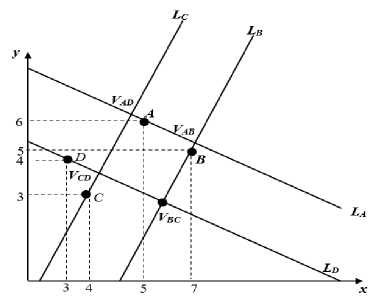
Fig. 5. Generalized square for the root k = –0.28
V ac ( 4.85;6.08 ) .
Рис. 5. Обобщенный квадрат для корня k = –0,28
Thus, for a given set of points, there are 4 generalized squares shown in fig. 2–5.
Conclusion. Remote sensing by spacecraft is a rapidly developing technology-based field. One of the most important components ensuring this development is the mathematical apparatus underlying the operation of the algorithms incorporated into the operation of spacecraft and providing the required parameters for sensing the earth's surface. The problem being considered in this work is devoted to this issue.
Sensing algorithms built on its basis will effectively obtain information about the state and boundaries of individual sections of the earth's surface within a short time (depending on the values of a finite number of specified parameters). The method being considered can naturally be expanded by changing the conditions imposed on the form of lines (not necessarily straight) passing through selected points on the earth's surface and intersecting under the conditions that are different from those given in the work under consideration.
Список литературы On remote sensing of the Earth by spacecraft
- Laboratoriya distantsionnykh metodov i geoinformatsionnykh sistem (LDM GIS) [Laboratory of remote sensing methods and geoinformation systems (LDM GIS)]. Available at: http://www.hydrology.ru/ ru/ structure/aboratoriya-distancionnyh-metodov-i-geoinformacionnyh-sistem (accessed 20.10.2020).
- Labutina I. A., Baldina E. A. Ispol'zovanie dannykh distantsionnogo zondirovaniya dlya monitoringa ekosistem OOPT [Using remote sensing data for monitoring ecosystems of protected areas]. Moscow, 2011, 88 p.
- Tokareva O. S. Obrabotka i interpretatsiya dannykh distantsionnogo zondirovaniya Zemli [Processing and interpretation of Earth remote sensing data]. Tomsk, Izdvo Tom. politekh. un-ta Publ., 2010, 148 p.
- Savinykh V. P., Tsvetkov V. Ya. Geoinformatsionnyy analiz dannykh distantsionnogo zondirovaniya [Geoinformation analysis of remote sensing data]. Moscow, Kartgeotsentr-Geodezizdat Publ., 2001, 228 p.
- Koshkin V. B., Sukhonin A. I. Distantsionnoe zondirovanie Zemli iz kosmosa. Tsifrovaya obrabotka izobrazheniy [Remote sensing of the Earth from space. Digital image processing]. Moscow, Logos Publ., 2001, 264 p.
- Egorov V. A. et at. [Possibilities of building automated systems for processing satellite data]. Sovremennye problemy distantsionnogo zondirovaniya Zemli iz kosmosa: Fizicheskie osnovy, metody i tekhnologii monitoring okruzhayushchey sredy, potentsial'no opasnykh ob"ektov i yavleniy. Moscow, Poligrafservis Publ., 2004, P. 431–436.
- Trifonova T. A., Mishchenko N. V., Krasnoshchekov A. N. Geoinformatsionnye sistemy i distantsionnoe zondirovanie v ekologicheskikh issledovaniyakh [Geographic information systems and remote sensing in environmental research]. Moscow, Akademicheskiy proekt Publ., 2005, 350 p.
- Chandra A. M., Gosh S. K. Distantsionnoe zondirovanie i geograficheskie informatsionnye sistemy [Remote sensing and geographic information systems]. Moscow, Tekhnosfera Publ., 2008, 312 p.
- Campell J. B. Introduction to remote sensing. London, The Guilford Press, 1966, P. 120–549.
- Dr. Kelso T. S. Basics of the Geostationari Orbit. Available at: http://www.celestrak.com/columns (accessed 20.10.2020).
- Dogovor o printsipakh deyatel'nosti gosudarstv po issledovaniyu i ispol'zovaniyu kosmicheskogo prostranstva, vklyuchaya Lunu i drugie nebesnye tela [Treaty on the principles of the activities of states in the exploration and use of outer space, including the Moon and other celestial bodies]. Available at: https://www.un.org/ru/ documents/decl_conv/conventions/outer_space_ governing. html (accessed 20.10.2020).
- Fateev V. F., Min'kov S. [New direction of development of small spacecraft for remote sensing of the Earth]. Izv. vuzov. Priborostroenie. 2004, Vol. 47, No 3, P. 18–22 (In Russ.).
- Lebedev A. A., Nesterenko O. P. Kosmicheskie sistemy nablyudeniya. Sintez i modelirovanie [Cosmic observation systems. Synthesis and modeling]. Moscow, Mashinostroenie Publ., 1991, 224 p.
- Pod"ezdkov Yu. A. Kosmicheskaya s"emka Zemli 2006–2007 gg. [Space imagery of the Earth 2006–2007]. Moscow, Radiotekhnika Publ., 2008, 275 p.
- Nevdyaev L. M., Smirnov A. A. Personal'naya sputnikovaya svyaz' [Personal satellite communications]. Moscow, Eko-Trendz Publ., 1998, 216 p.
- Pogorelov A. V. Analiticheskaya geometriya [Analytic geometry]. Moscow, Nauka Publ., 1968, 176 p.
- Tabachnikov S. L., Fuks D. B. Matematicheskiy divertisment [Mathematical divertissement]. Moscow, MTsNMO Publ., 2011, 512 p.

